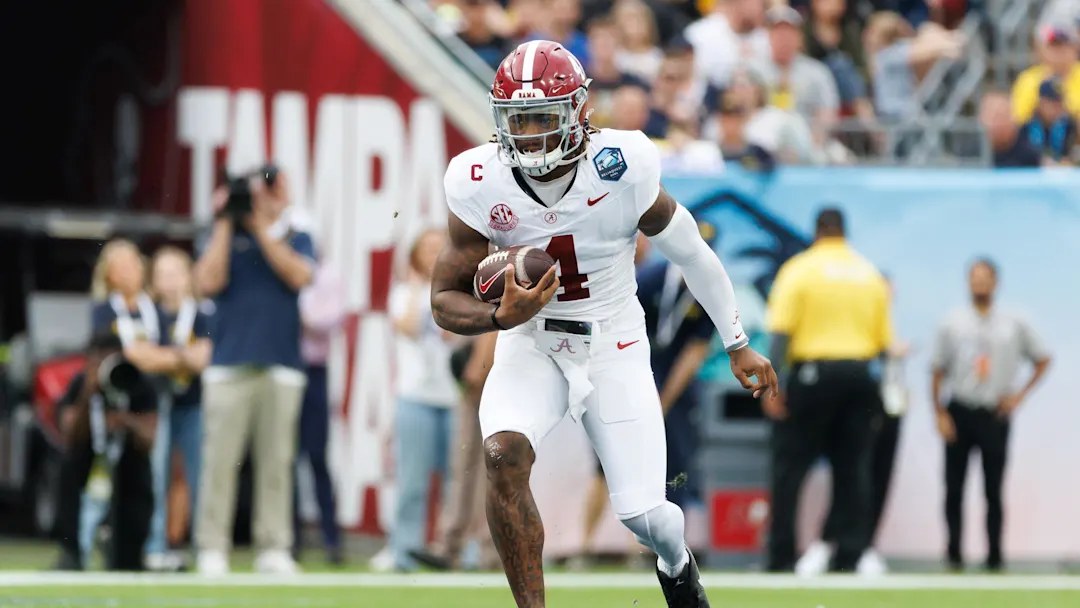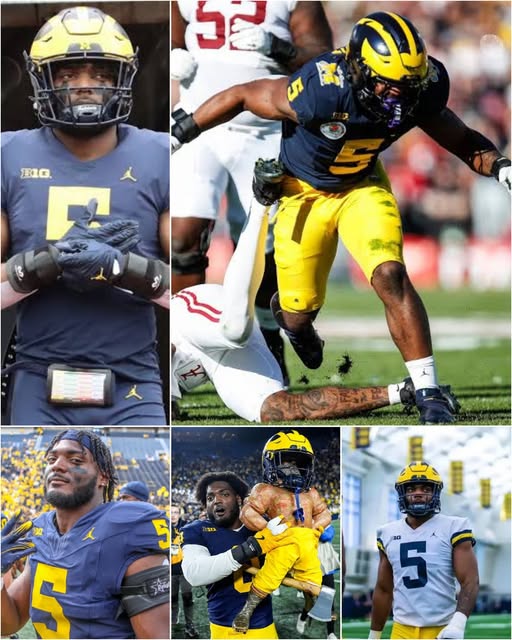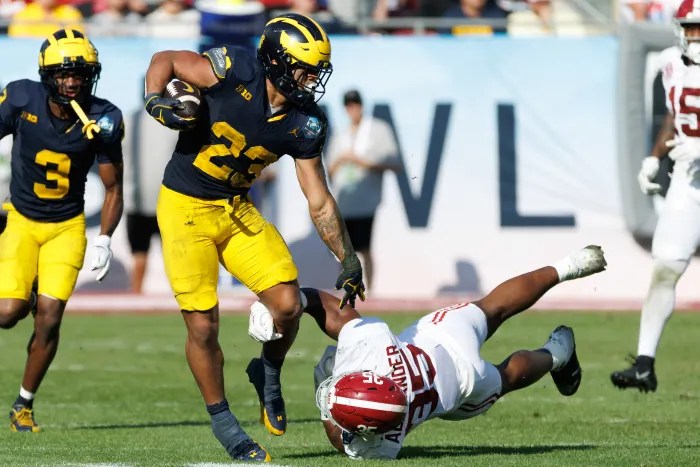In a tightly contested 19-13 loss to Michigan in a pivotal college football matchup, Alabama quarterback Jalen Milroe’s performance became a focal point of analysis. Despite a valiant effort, Milroe’s play was a key factor in the outcome, and there were several notable aspects in his game that tipped off Michigan’s defense and led to the Crimson Tide’s narrow defeat.
Milroe, a dual-threat quarterback with the ability to make both plays with his arm and legs, was expected to be a key part of Alabama’s offensive attack. However, the Wolverines’ defense seemed to have his number, stifling the explosive potential Milroe typically offers. Here’s a closer look at what stood out in the loss and how Milroe’s performance shaped the game.
1. Predictable Passing Game
One of the most glaring issues in Milroe’s play was his predictability in the passing game. Michigan’s defense seemed to consistently anticipate his throws, especially on obvious passing downs. Milroe’s mechanics, which had been solid throughout the season, appeared to break down under pressure. He was frequently telegraphing his throws, tipping off defenders on where he was going with the ball. This gave Michigan’s secondary a slight edge, as cornerbacks and safeties were able to jump routes or break up passes before they could develop.
In particular, Milroe’s deep ball accuracy struggled, and his inability to mix up the timing and location of his throws made it easier for the Wolverine defense to predict his moves. With few adjustments in his technique, Milroe was unable to evade the pressure from Michigan’s stout defense, which kept him in check throughout the game.
2. Missed Opportunities with His Legs
While Milroe is known for his rushing ability, there were several missed opportunities for him to capitalize on Michigan’s defensive alignments. On a number of occasions, he had open lanes to scramble and gain positive yards, but he hesitated or failed to take advantage of those moments. At times, Milroe tried to force throws into tight coverage instead of using his legs to extend the play or gain valuable yards on the ground. This hesitation allowed Michigan’s defense to keep him in the pocket, limiting his dual-threat capabilities.
In particular, on key third downs and in red-zone situations, Milroe’s decision-making appeared to falter, contributing to several stalled drives. Had he used his mobility more effectively, he might have alleviated some of the pressure his offensive line was facing, and perhaps Alabama’s offense could have been more productive.
3. Pressure and Disruption
Michigan’s defensive line generated consistent pressure on Milroe throughout the game. The Wolverines’ ability to get into the backfield rattled Milroe and threw off his timing. There were several instances where he had little time to survey the field, forcing him into rushed decisions. With his eyes dropping from downfield to the rush, Milroe couldn’t execute his reads properly. His inability to adjust to the pressure allowed Michigan to control the tempo of the game.
The Wolverines’ ability to disguise blitzes and create confusion at the line of scrimmage played a major role in limiting Milroe’s effectiveness. He struggled to identify where the pressure was coming from and often took unnecessary sacks that hindered Alabama’s offensive flow.
4. Lack of Chemistry with Receivers
Another area that hindered Milroe’s performance was his lack of chemistry with his receivers. Alabama’s offense has been in a state of flux all season, with various personnel changes and a rotating group of skill players. In this game, it was clear that Milroe had not yet developed the consistency needed to connect with his wideouts under pressure. On a number of occasions, there were missed connections on routes, especially on timing patterns where the ball was thrown too early or late, resulting in incompletions or even potential interceptions.
The absence of clear, quick reads in the passing game forced Milroe to hold the ball longer, giving Michigan’s defense more opportunities to get to him. Additionally, some of Milroe’s throws sailed high or were off-target, further affecting the rhythm of Alabama’s offense.
Conclusion
In Alabama’s 19-13 loss to Michigan, Jalen Milroe’s performance was one of the key factors that led to their inability to overcome the Wolverines. His predictability in the passing game, missed opportunities with his legs, and struggles against pressure ultimately tipped off Michigan’s defense and made it difficult for Alabama to sustain offensive momentum.
Milroe has the talent and ability to be a game-changing quarterback, but against Michigan, he was unable to break through the defense’s schemes. If Alabama is to move forward and challenge for a championship, Milroe will need to refine his decision-making, improve his chemistry with his receivers, and utilize his mobility more effectively to avoid defenses like Michigan’s from neutralizing his strengths.



